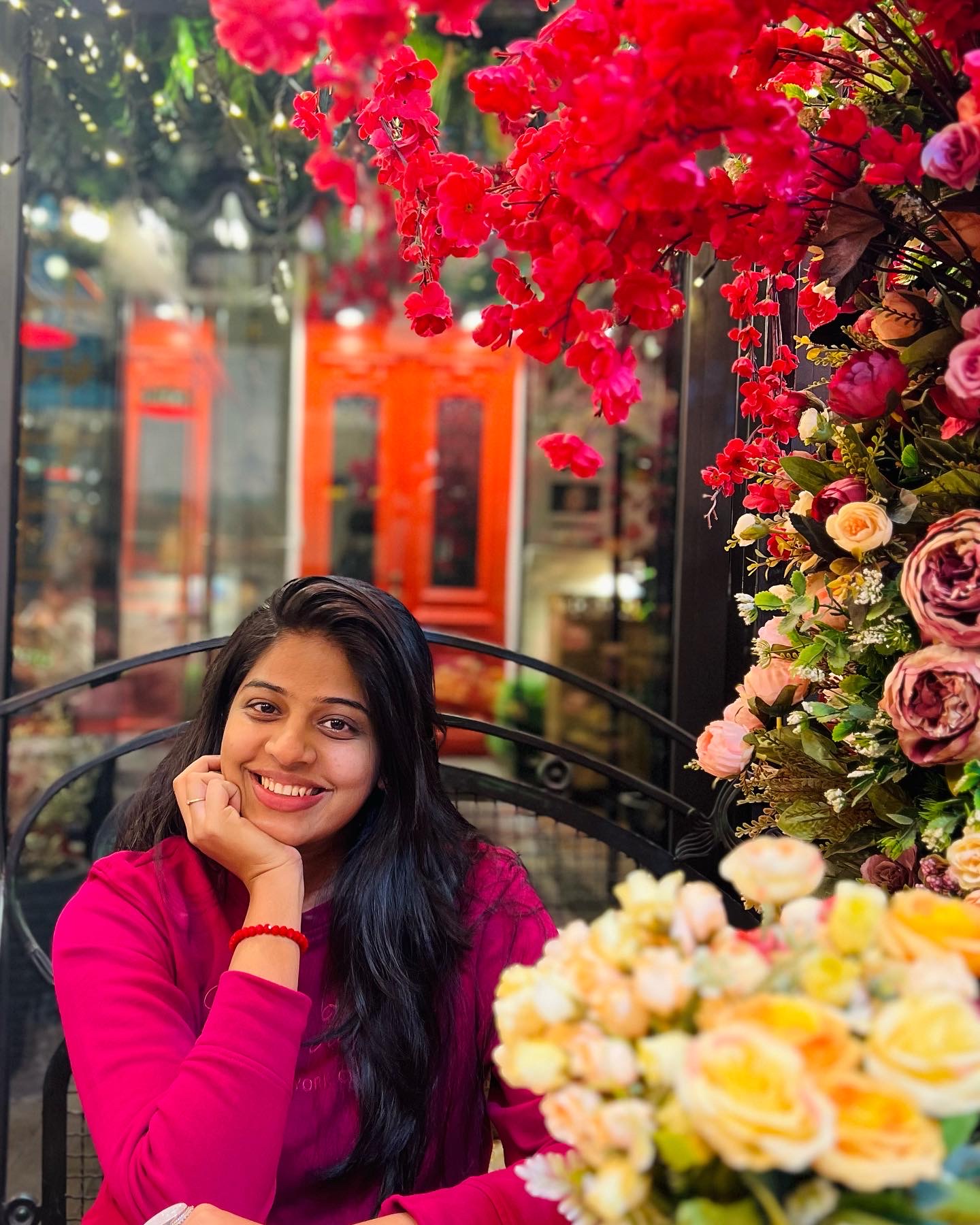Our kitchen was where we laughed, shared stories, and smelled the spices in the air. Puja’s mom taught her that food wasn’t just for eating; it was a way to show love and connect with others. Whenever there was a festival, she had unique dishes with stories behind them. These stories explained how the dishes came to be and why they were necessary for the festival. As she journeyed through life, her passion for food only grew stronger.

She found herself experimenting with new ingredients, trying recipes from different cultures, and sharing my culinary adventures with anyone who would listen. Instagram has become more than just a place to post pictures. It was like a club for people who loved food as much as she did. She shared her cooking adventures, hoping to make people as happy.
People started to notice. Soon, she had friends worldwide who loved food as much as her. Even though she got many likes and followers, she always remembered why she started. Her main motive was to tell everyone how delicious our Indian dishes are. Plus, she wanted people in other countries to learn about our excellent Indian food.
Puja Korupu Embarks on Culinary Journey as Food Blogger
Growing up, our kitchen was where we laughed, shared stories, and smelled the spices in the air. My mom taught me that food wasn’t just for eating; it was a way to show love and connect with others.

Whenever there was a festival, we had special dishes with stories behind them. These stories explained how the dishes came to be and why they were important for the festival.
As I journeyed through life, my passion for food only grew stronger. I found myself experimenting with new ingredients, trying out recipes from different cultures, and sharing my culinary adventures with anyone who would listen.
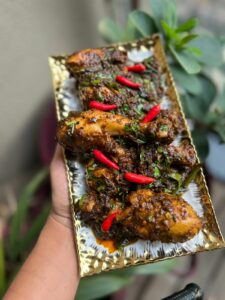
Instagram became more than just a place to post pictures. It was like a club for people who loved food as much as I did. I shared my cooking adventures, hoping to make people as happy as food made me.
People started to notice. Soon, I had friends all over the world who loved food as much as I did. Even though I got lots of likes and followers, I never forgot why I started. My main motive was to tell everyone how delicious our Indian dishes are. Plus, I wanted people in other countries to learn about our amazing Indian food.
Can you describe a traditional dish from your culture and discuss how historical events have shaped its ingredients and preparation methods?
A traditional dish which we all love is Dosa,a crispy pancake from South India. It’s made from rice and lentil batter and usually served with chutney and sambar, a veggie stew.
Let’s see how history affected dosa:
- Old Times and Farming: Dosa’s story starts long ago in India, where rice and lentils were common crops. People learned to ferment the batter to keep it fresh in the hot weather. This fermentation also made the batter healthier.
- Dravidian Influence: South India has a rich history, and dosa likely comes from the Dravidian people. They were good at farming and cooking, so they probably invented dosa.
- Colonial Times: When Europeans came to India, they brought new ingredients and ideas. For example, traders brought black gram (urad dal), which became a key part of dosa batter.
- Different Types in South India: As dosa spread across South India, it changed in different places. For example, some regions added spicy mashed potatoes (Masala Dosa), while others made thinner crepe-like dosas (Neer Dosa).
- Today’s World: Dosa isn’t just popular in India anymore; it’s famous worldwide. People love it because it’s healthy, gluten-free, and you can put all kinds of toppings on it. So now, you can find dosa with cheese, veggies, or even chocolate!
In short, dosa is a yummy South Indian dish that’s been around for a long time. Its story shows how history, culture, and people’s tastes have made it what it is today.
In what ways do you think cuisine reflects the cultural identity of a region or community? Can you provide an example where food has played a pivotal role in expressing cultural heritage?
I strongly believe that cuisine serves as a mirror reflecting the cultural identity of a region or community in various ways. For example, the choice of ingredients and the flavor profiles in a cuisine often reflect the local environment, agricultural practices, and historical influences. For example, coastal regions might heavily feature seafood in their dishes, while regions with fertile farmland might showcase a variety of vegetables and grains. Spices and herbs used in cooking can also indicate cultural preferences and historical trade routes.
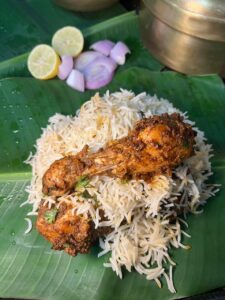
The methods used to prepare food can be deeply rooted in tradition and cultural practices. For instance, slow-cooking methods like stewing or braising might be prevalent in regions with colder climates, while grilling or barbecuing could be more common in warmer regions. These techniques not only affect the taste and texture of dishes but also carry cultural significance.
One example where food has played a pivotal role in expressing cultural heritage is the tradition of Thanksgiving in the United States. The centerpiece of the Thanksgiving meal is typically a roasted turkey, accompanied by side dishes such as mashed potatoes, stuffing, cranberry sauce, and pumpkin pie.
These foods have become synonymous with Thanksgiving and are deeply ingrained in American cultural identity. The act of preparing and sharing a meal with loved ones on Thanksgiving serves as a way for people to connect with their cultural heritage, express gratitude, and strengthen familial bonds.
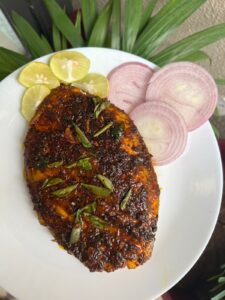
And coming to Indian context Hyderabadi Biryani is a flavorful and aromatic rice dish that originated in the kitchens of the Nizams, the rulers of the historic Hyderabad state. It is a classic example of the fusion of Mughlai and Indian culinary traditions, reflecting the rich cultural heritage of the region.
How do specific foods play a role in the celebrations and ceremonies of your culture? Could you share how these foods are prepared and their significance?
“Lemon Rice,” and “Coconut Rice” are commonly prepared during festivals and special occasions in Southern parts of India. These rice dishes are often tangy, flavorful, and easy to prepare in large quantities, making them ideal for serving to guests during celebrations.
Coming to sweets, a popular example would be “Payasam”, “Mysore Pak” which are traditionally offered to deities during rituals. We also make “Bobbattu” a traditional sweet flatbread, goes by various names depending on the region where it’s made.
Savory snacks are also an integral part of South Indian celebrations and ceremonies. “Murukku” (crispy, twisted snacks made from rice flour and spices), “Masala Vada” (spicy lentil fritters), and “Medu Vada” (fried lentil donuts) are commonly prepared and served as appetizers or tea-time snacks during festive gatherings.
The significance of these foods in South Indian celebrations lies in their ability to bring people together, evoke nostalgia, and create a sense of community and cultural identity. By preparing and sharing these traditional dishes during festivals and ceremonies, South Indians uphold their culinary heritage and pass down cherished recipes and traditions from one generation to the next.
How do you think the concept of culinary fusion challenges or enriches traditional definitions of national cuisines?
Mixing different culinary traditions, ingredients, and cooking methods creates new and interesting dishes that show how diverse our world is. While this can be exciting and bring people together, it also makes it harder to know what’s authentic and can sometimes hurt the original culture or cuisine. So, while trying new things is fun, it’s also important to respect where they come from and how they’re used.
What role does global cuisine play in the worldwide rise of diet-related health issues like obesity and diabetes?
Global cuisine, with its variety of foods from around the world, is a big reason why more people are facing health problems like obesity and diabetes. Here’s why:
- Easy Access to Unhealthy Foods: Global cuisine often includes foods that are high in sugar, fat, and salt. They’re sold everywhere, like in supermarkets and fast-food places, so it’s easy to get them. Eating these foods a lot can make you gain weight and increase your chances of getting type 2 diabetes.
- Changing What We Eat: When people try foods from different cultures, they might start eating less healthy foods and more processed ones. This shift in diet, with more sugary drinks and fatty meals, can mess up how many nutrients we get and lead to health issues like obesity and diabetes.
- Eating More, Everywhere: Global cuisine often encourages us to eat bigger portions and snack more often. This can lead to eating too much and taking in too many calories, which can make us gain weight and have health problems.
- Ads for Unhealthy Foods: Companies that make global foods advertise them a lot, especially to kids and teens. This can make people choose less healthy foods, which adds to the health problems we see.
- Not Knowing Enough About Nutrition: With all the different foods available, it can be hard to know what’s good for us. Some people might not realize how unhealthy some foods are or how they can affect our health, leading to bad eating habits and health issues like obesity and diabetes.
Overall, while global cuisine gives us lots of tasty options, it also brings health challenges. To tackle this, we need to make sure everyone has access to healthy foods, teach people about nutrition, and set rules to limit unhealthy foods being sold and advertised.
Q7) Can you explain the cultural significance of a particular recipe within your cuisine? How does this recipe tell a story of your heritage?
Let’s explore the cultural significance of “Gongura Pachadi,” a traditional Andhra Pradesh dish.
Gongura Pachadi is a spicy and tangy chutney made from gongura leaves, also known as sorrel leaves. It holds a special place in Andhra Pradesh cuisine and carries deep cultural significance for the people of the region.
- Historical and Agricultural Heritage: Gongura, or sorrel leaves, have been cultivated in Andhra Pradesh for centuries and are an integral part of the state’s agricultural heritage. The cultivation of gongura reflects the rich agricultural traditions of Andhra Pradesh and the importance of locally grown, seasonal ingredients in the cuisine.
- Culinary Tradition and Family Recipes: Gongura Pachadi is often prepared using traditional family recipes that have been passed down through generations. The recipe may vary from household to household, with each family adding its own unique blend of spices and flavors. The preparation of Gongura Pachadi is a cherished culinary tradition that connects individuals to their family roots and cultural heritage.
- Regional Identity and Pride: Gongura Pachadi is considered a quintessential Andhra dish and is synonymous with the region’s culinary identity. It is enjoyed by people of all backgrounds and is often served as a side dish with rice, roti, or dosa. The popularity of Gongura Pachadi showcases the pride that Andhra people take in their regional cuisine and ingredients.
- Seasonal Celebrations: The harvesting of gongura leaves is often celebrated as a seasonal event in Andhra Pradesh. During the gongura harvesting season, families come together to pick the leaves and prepare Gongura Pachadi, symbolizing the joy of the harvest and the abundance of nature.
- Cultural Resilience and Adaptation: Gongura Pachadi reflects the resourcefulness and resilience of Andhra cuisine. Despite its humble ingredients, the chutney is bursting with bold flavors and spices, showcasing the creativity and ingenuity of Andhra cooks in transforming simple ingredients into delicious dishes.
Overall, Gongura Pachadi serves as a culinary symbol of Andhra Pradesh’s cultural heritage, agricultural traditions, and regional identity. Its preparation and consumption evoke a sense of pride, nostalgia, and connection to the land, reinforcing the cultural bond between food, community, and heritage in Andhra Pradesh.
How have spices influenced historical trade routes, and what impact did this have on the political and cultural landscape of your region?
Spices have had a big impact on Andhra Pradesh’s history, trade, and culture. Here’s how:
Located strategically on the southeast coast of India, the state was a key stop in ancient trade routes that connected India with Southeast Asia and the Middle East. Spices like black pepper, turmeric, and red chili, grown in Andhra Pradesh, were in high demand and brought lots of wealth to port cities like Machilipatnam and Visakhapatnam.
Traders and merchants coming in brought new ideas and customs, making Andhra Pradesh a diverse and vibrant place. The control of spice trade routes also played a role in the rise of powerful empires and kingdoms in the region.
Andhra cuisine is famous for its bold and spicy flavors, thanks to the abundance of spices. Dishes like biryanis and curries showcase the region’s rich culinary heritage, shaped by its ties to the spice trade.
In short, spices have shaped Andhra Pradesh’s economy, culture, and food, leaving a lasting mark on its identity.
What is the science behind the flavor and aroma of spices? How do they transform the taste of a dish when used in different quantities or combinations?
Spices get their flavor and smell from special chemicals. These chemicals interact with our taste buds and smell sensors, giving each spice its unique taste and aroma. Spices like turmeric, cumin, and coriander have different chemicals that make them taste and smell the way they do. When we use spices in food, they can make it taste sweeter, sourer, saltier, bitter, or richer, depending on how much we use and which ones we combine.
When we cook with spices, they release special smells that make our food more interesting and bring back memories. Mixing spices together can make them taste even better than they would on their own. It’s important to use the right amount of spices in cooking so that they don’t overpower other flavors or get lost in the dish.
Back in the old days, my grandma could add spices to her dishes without measuring. She just knew what was needed by smelling the food. Surprisingly, her dishes always came out just right, without needing any changes at the end.
Talk with us about your favorite cuisine? Why?
Even though I’ve tried cuisines from all over the world like Thai, Georgian, Mexican, Italian, French, and Chinese, Indian cuisine remains my absolute favorite.
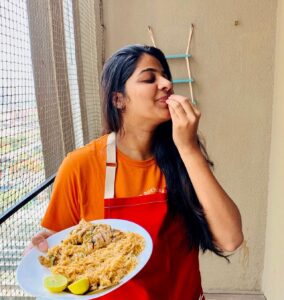
I love Indian food because it’s so diverse – from the tasty dishes of North India like butter chicken and biryani to the spicy South Indian treats like dosas and sambar, there’s always something new to try. The mix of aromatic spices and herbs creates flavors that are like no other. It’s amazing how just one spice can change a dish completely, making it rich and complex. Sharing meals with family and friends adds to the fun, and there’s always a warm, welcoming feeling when you sit down to eat. Plus, I really like that there are so many delicious vegetarian options to choose from, catering to different diets. All in all, Indian cuisine is my favorite because of its amazing flavors, cultural importance, and the joy it brings to sharing meals with loved ones.


